Breeding and growing quail at home is not the last place in the farm. The bird has gained its popularity due to tasty and healthy eggs. But quail bred not only therefore. Many breeders keep them for their dietary tasty meat, which is famous for many breeds of birds.
Table of contents
Where it all began
Common quail is a small bird pheasant family, the smallest representative of the order of chickens. The length of its body is only 20 cm, and the weight of an adult individual is from 80 to 150 grams.
Feather color quail beige with spots and strokes. Males have a darker color of goiter, and around the eyes there is a pronounced dark spot that looks like a helmet. The females do not have these spots.
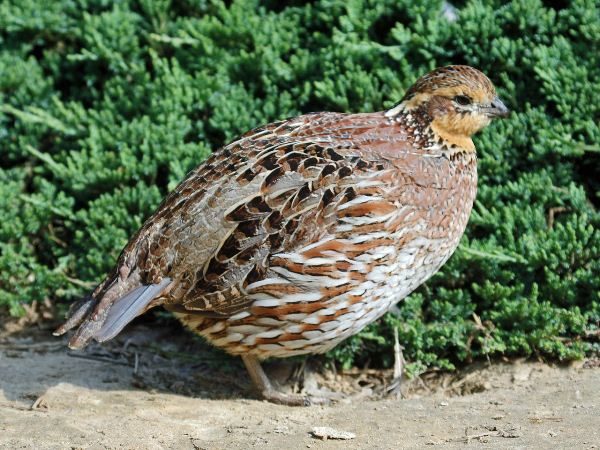
By its nature, ordinary quail is very shy birdwhich in nature is very difficult to notice. Quails grow very quickly, they fledge by two weeks. From now on, the young birds try to fly. Quail is one of the migratory birds of the chicken squad. Therefore, it is necessary to keep a bird in captivity in cages.
Breeders bred a lot of breeds of quail, which are bred in a private farmstead in order to get meat and eggs.Growth rates of these birds are pretty good. Live the mass of the male quail ranges from 110 to 180 grams, depending on the breed. And female quails are much larger than males. Their weight can reach up to 250 grams. Egg-laying starts early, at the age of 50 days. Some breeds begin laying later. Each female gives over 300 eggs a year, which are used for culinary purposes and for incubation. The weight of one egg is up to 14 grams.
Quails are grown not only at the dacha. In order to produce good carcasses of meat and dietetic eggs, quail farms were built. Quail breeding - This is the most cost-effective occupation, for a start, you can use a regular barn.
Varieties and their characteristics
Many types of quail were bred that conquer the breeders with their qualities. Broiler breeds able to provide large quantities of meat at minimal cost. Egg breeds contain mainly for large eggs, which are in demand in the consumer market.
Texas
This breed of bird was bred for meat. Texas quails exceed other breeds. A broiler type bird for creating which used meat breeds of quails.
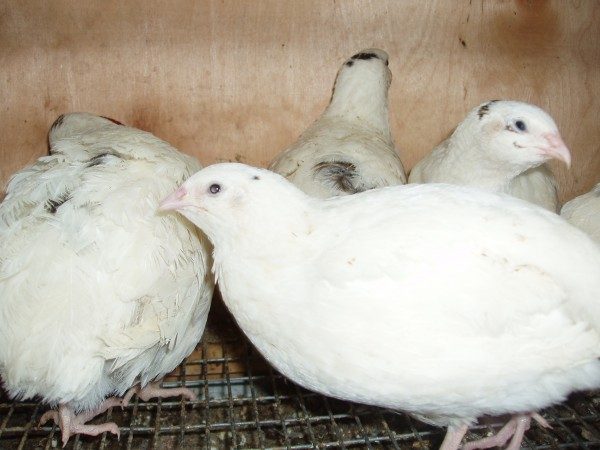
Special features
Texans have a snow-white color of the pen, for which they are popularly called albino or white giants. Sometimes on the white feather of a bird one can notice small black blotches. This is the norm.
Outwardly quail of this breed large. Breast pronounced meat type: round, wide. The bird's paws, tail and neck are short. The tip of the beak is dark, the eyes are quail black.
Meat quality
The average bird of this breed gives up to 250 grams of meat. At proper feeding and content, it is able to score up to 550 grams.
Egg production
First egg in females of this breed is formed by the age of two months. Eggs are quite large. In one year, the female is able to lay up to 280 eggs, with an average weight of 12 grams.
Manchurian
Description
Manchurian quails are very beautiful birds. Pen color combines feathers of yellow and brown colors. People call these quails gold. On the female's breast, one can notice characteristic black blotches that the male does not have.
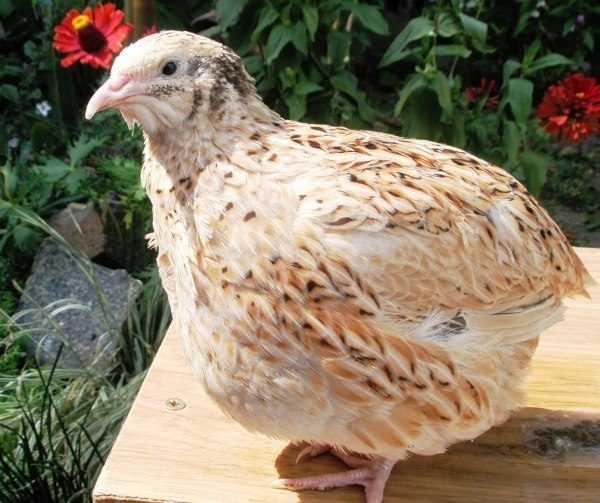
To determine quail floor it is possible at 100% only by looking under the tail of the bird. In the male, between the tail and the cloaca there is iron, when pressed, white matter is released. The females do not have this gland.
Bird productivity
Manchurian breed of quail is known for its meat and egg qualities. The egg production of females is up to 180 eggs per year, but they are much larger than others. The average egg weight is up to 18 grams.
The males of this breed gain weight 150 grams, but with proper fattening the birds are able to give high performance. Average carcass weight - 300 grams.
Meat quail breed Pharaoh
The main feature of these birds is a good one. meat carcass.
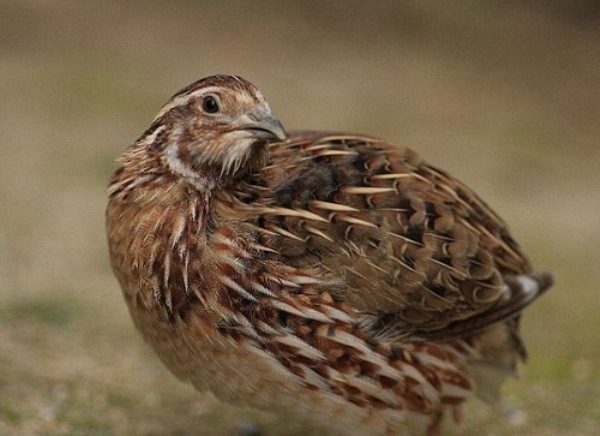
Characteristic
Externally, the birds of this breed resemble wild relatives. Plumage color Pharaohs are greyish brown. Females on the breast are characterized by white and black stripes. The weight of females is much higher than males.
Meat quality
Pharaohs refer to meat quails. Average female weight reaches 300 grams, and the male is somewhat smaller. The distinctive quality of this breed is early maturity. Already by two months can be slaughtered. Quails of this species need a balanced feed.
Egg-laying
Pharaoh's female begins egg-laying at about 45 days. However, it is not possible to use the first eggs for incubation. Egg weight makes up to 15 grams. The average female is able to lay up to 200 eggs in one year of intensive egg-laying. To produce eggs, females should eat well.
California
California quails are not widely spread and are mainly kept for beauty. Growing these birds is unprofitable. Low survival rate of young stock, poor growth rates.
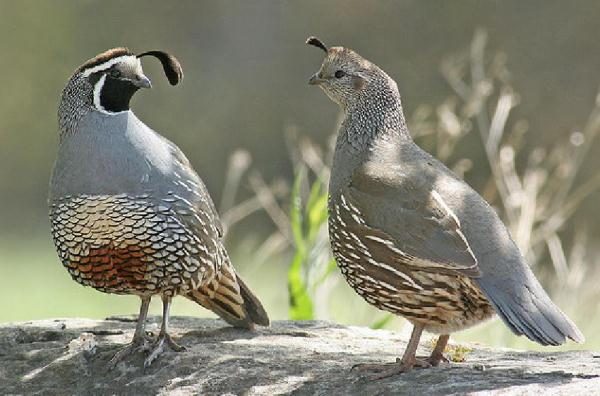
It is necessary to contain this breed in the most natural conditions, otherwise the bird loses its decorative effect.
Japanese
Description
The plumage of Japanese quail has rust brown color. The collar zone is darker for males than for females.
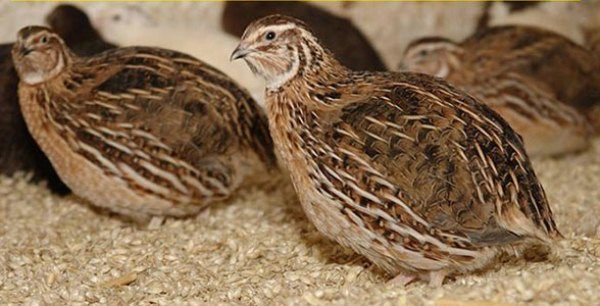
Productive characteristics
Bird weight varies, depending on the breed line. On average, it is up to 150 grams. Egg bird species are well carried. Average egg productionl females is more than 300 eggs per year.
Tuxedo
This breed came from the crossing of white and black English quail. Externally, a very large beautiful bird.
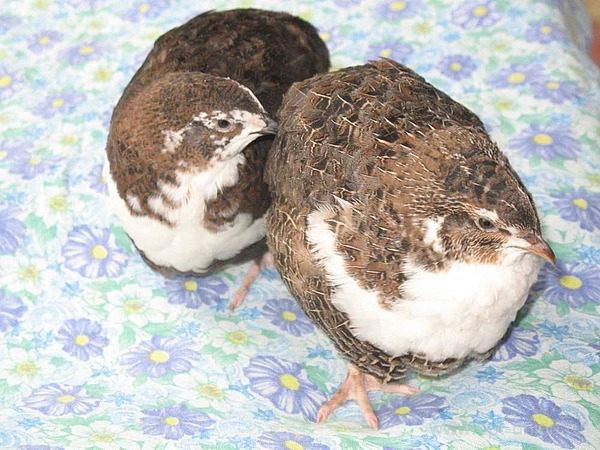
Characteristic
The bird has a tuxedo feather color. The breast has a light colored feather and the back is darker. The females and males of this breed are the same in color.
Productivity
These birds are bred more for decorative purposes. Female weight is only 180 grams, and the males do not exceed 150 grams. The bird has good egg production. Female tuxedo quails lay up to 280 eggs per year.
Breeding characteristics
To breed quails on the summer cottage is quite simple. They do not require a lot of space, high financial costs and unpretentious care. All that a bird needs is warmth, light, and a balanced feed. Great advantage quails are eggs that can be eaten even raw.Bird not exposed salmonellosis.
For breeding poultry breeder need to decide on the breed and the purpose of breeding quail. All breeds are divided into several types:
- meat quails;
- egg birds;
- meat - egg kinds.
The last species of bird is most in demand. This is due to the fact that in addition to eggs, you can also get good meat.
Egg Incubation
For breeding quail need an incubator. This can be a homemade device or purchased in the store. Up to 400 eggs can be placed in a typical small incubator.
Incubation period lasts an average of 17 days. On the 18th day, the incubation ends. At observance of the required temperature regime, the output of young stock is very high.
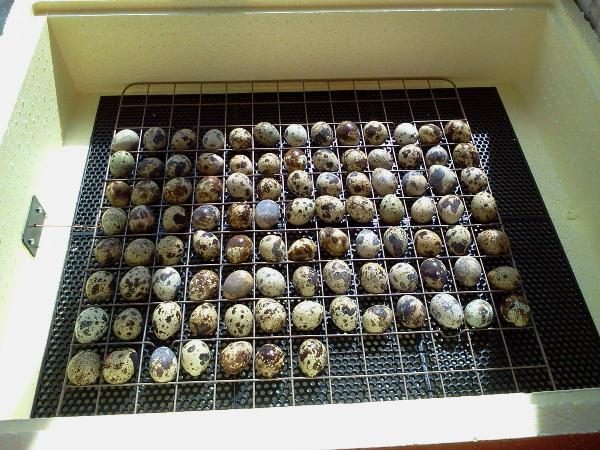
The entire incubation period temperature The chamber is maintained at 38–38.5 degrees. Humidity should be more than 50%. Under such conditions, the elimination takes place amicably and ends after 6 hours.
Rearing and caring for chicks
The young hatching is distinguished by its mobility. Contain quail need a special brooder, where they maintain the required air temperature. First 14 days the temperature should not fall below 38 degrees.
From 15th day the temperature in the brooder is reduced to 25 degrees. By the age of one month, chicks should be accustomed to normal room temperature, which is 20–22 degrees.
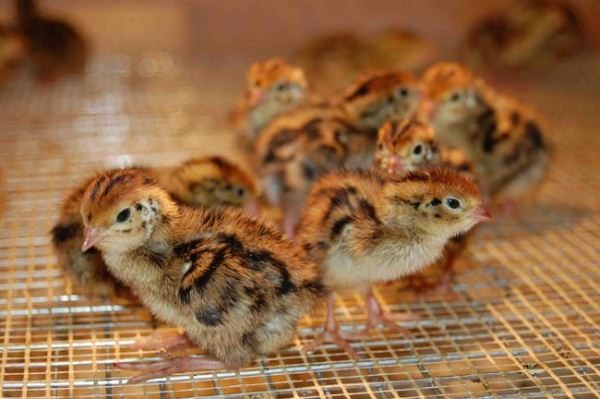
24 hour light mode maintained for the first 14 days. Further, the bird is transferred to the usual daylight hours.
Feeding quail at home
From the moment of hatching, chicks need vitamins and minerals. Can use quality feed for the young, which contains all the necessary substances. In the absence of feed, boiled eggs can be given to quails, which are crushed and placed in a bowl.
From 4 days fine crushed corn grits, cottage cheese and high-grade compound feed for young animals are introduced into the feed.
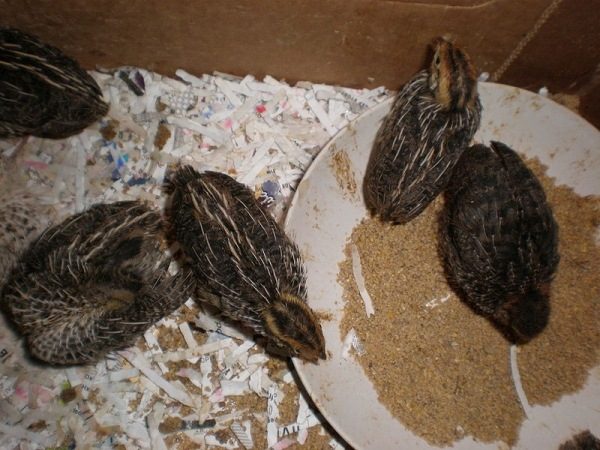
8 to 20 days in the main diet of young stock only feed. You can add greens, carrots, meat waste.
From the 20th day Feeding young quail is not different from feeding adults.
By week 10 young growth completes and begins puberty. With 45 days, most breeds begin egg-laying.
Feeding adult quail
For feeding adults feeders and drinkers taken out of the cell. Birds thrust heads for feeding through the rods. This method of feeding reduces the cost of feed.
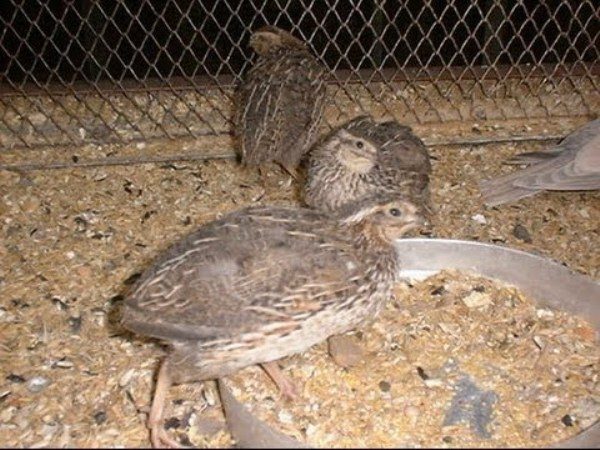
Adult birds fed 3 times a day, at the same time spend 30 grams of feed per individual.
For females, the best nutrition is a balanced feed for laying hens. Sometimes grains, garbage, greens and fruits are added to food. The crushed shells, chalk, sand, boiled fish must be present in the ration of the hens.
Fattening birds for meat
When reaching quail month old they are separated by gender. Males and rejected females are planted separately and begin fattening for meat.
Fattening is carried out at a temperature of 22 degrees and low light. Feeding mode for these birds is different. Quails are fed 4 times a day, with large doses. In the first half of the day add green feed, and in the evening give grain waste. The fattening period is about 60 days.
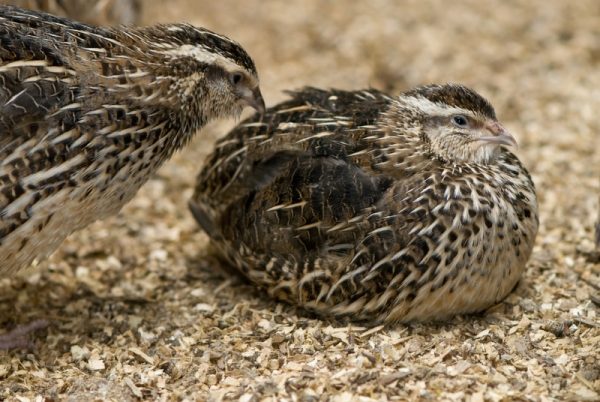
Slaughter is carried out as soon as the bird reaches the required body weight. Before slaughter, quails are not given food for 6 hours. Leave only the water in the drinkers.
Features of winter cultivation
- Quails are kept in low cages with a mesh floor, which facilitates the cleaning process, and reduces the risk of disease.
- In winter house temperature should not fall below 16 degrees. With sharp jumps in temperature or with too low indices, the egg production of females drops sharply. Comfortable temperature for the development of poultry should be at 22 degrees.
Quails diseases
Most often livestock begins cheer because of the change of feedbad conditions of maintenance, poor-quality feed, lack of nutrients.
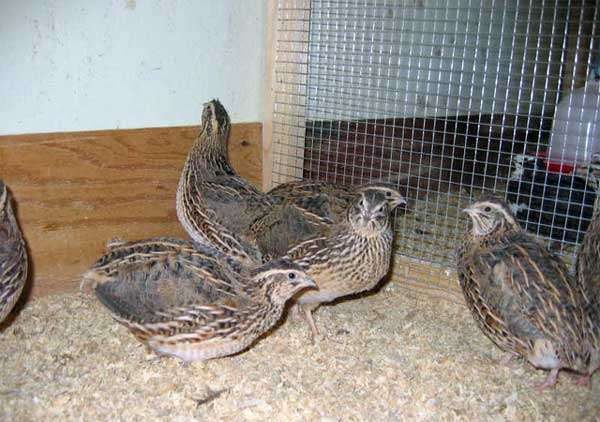
Improper nutrition and maintenance
Quails are ill with avitaminosis, which develops when there is a shortage of nutrients or a violation of diet, change of feed.
Symptoms of the disease include:
- ruffled feathers;
- the loss appetite;
- lethargy;
- drooping heads;
- stretching neck.
Birds are changing their diet, they inject more nutrients, they follow the feeding regime.
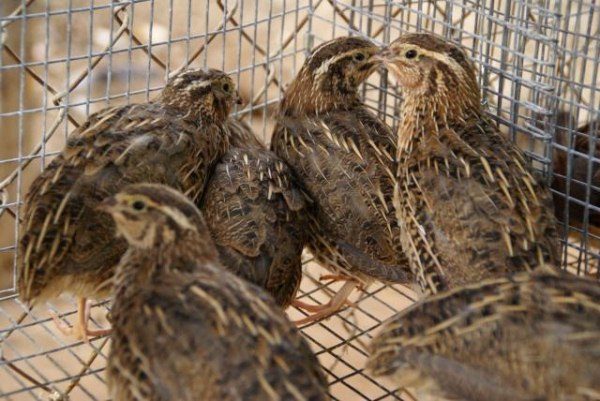
In violation of the conditions of poultry subject to the following diseases:
- dropping out oviduct;
- cannibalism;
- dropping out feathers;
Enough to correct conditions of detention and the birds bounce back.Change the brightness of the light, reduce the number of individuals in the cell and introduce the missing vitamins and minerals.
Reviews breeders about quail
Many breeders prefer breed quail breed Pharaoh and white Texan. Birds grow well, they are not susceptible to pecking, they gain excellent weight.
Youngsters It is distinguished by good vitality, immunity and rapidly growing, so even a novice breeder will not be hard to grow full-fledged individuals.
Breeding quail is no more difficult than chickens. The main task of the breeder - maintenance of cleanliness, compliance with conditions of detention and feeding. With a competent approach to growing quails, poultry are productively carried and give good growth rates.

Information is a lot of useful and important. But I, as a beginner, have a number of questions:
1. Where to buy quail eggs for breeding?
2. Where to buy an incubator for quail eggs?
3. Is there any experience selling quail quails?
4. What diseases quail should be feared, except for beriberi?